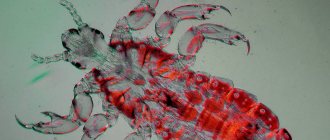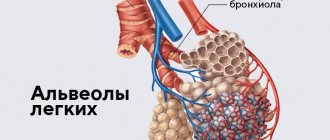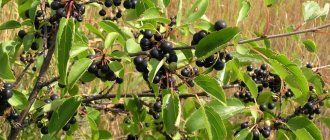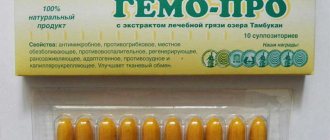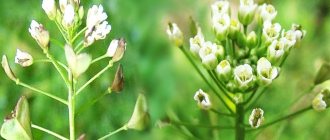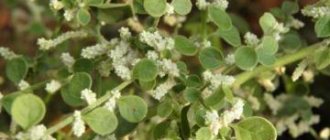Description, reproduction and distribution area of comfrey
Perennial herbaceous plant of the borage family (Boraginaceae), up to 1 m high.
The rhizome is short, black (white inside), with long, thick roots.
The stem is straight, thick, branched in the upper part, winged.
The leaves are alternate, rough, with prominent reticulate venation on the underside, the basal and lower stem leaves are larger, narrowed into a long, winged petiole, the middle and upper ones are sessile, running far down.
The flowers are drooping, regular, on peduncles, collected in curls at the top of the stem and branches. The calyx is deeply five-parted, the corolla is tubular-bell-shaped, shallowly five-lobed, violet or purple when blooming, later blue with a white edge.
When ripe, the fruit splits into 4 grayish-black smooth, triangular shiny nuts.
Comfrey blooms in May - July, the fruits ripen in July - September. Seeds begin to ripen from the lower inflorescences.
Propagated by seeds and vegetatively.
Distributed in the European part of the CIS, in the south of Western Siberia, in Kazakhstan and the Caucasus. Comfrey grows on very fertile moist soils in oak-ash and alder forests, along the banks of low-lying swamps, often in floodplain forests, in wet meadows, near streams and ditches.
ATTENTION! The plant is poisonous!
In past centuries, comfrey was very popular. The plant was grown in a pharmaceutical garden in Moscow. For this purpose, 20 pounds of living plants were sent from Polotsk and Smolensk to Moscow in 1666 for planting.
Where does comfrey grow?
Young leaves of comfrey.
Photo: Pixabay The plant’s range extends into Siberia and Kazakhstan; it is a European species. You can find comfrey along river banks, in wet meadows, damp places, and in deciduous forests throughout the European part of Russia.
Previously, the plant was planted in every peasant's yard, and they took care of it so that it would grow well. The grass was considered a lifesaver for many ailments.
Comfrey is one of the most undemanding garden plants. If you plant it just once, then it is quite difficult to get rid of it. It grows well in open sunny places and in the shade, on fertile and completely uncultivated soils.
It reproduces by rhizomes, so it can very soon become an aggressive weed. Removed and discarded rhizomes quickly begin to grow. Pieces of durable material dug around it will help protect the plant from growing. They should be dug into the ground to a depth of at least 20 centimeters.
Collection, preparation and drying of comfrey
Underground organs are harvested in August - September or early spring. The plants are dug up, the seeds are shaken into the hole formed during digging, the soil is shaken off there, the stem is cut off with a knife, small roots are removed, thick ones are cut into pieces of 15-20 cm, washed, then cut lengthwise for quick drying, rotten parts are cut out and again rinse in running water. Dry in attics, under canopies or in dryers at a temperature of 30-40 °C. With slow drying and poor ventilation, the white roots inside turn brown, making them unsuitable for use. The shelf life of raw materials is 3 years.
Description
Comfrey is a herbaceous plant belonging to the Borage family and is a perennial.
Comfrey can reach a height of 100 cm. The stem of comfrey is erect, with numerous branches, and covered with dense hairs. The leaves are elongated, large in size, the flowers are similar in shape to Bells, collected in inflorescences-panicles in the form of a curl, the color varies from pale pink to dark lilac. The flowering period of comfrey lasts from early to mid-summer. Then fruits appear on the plant - nuts with one seed. The roots of comfrey are powerful, spreading, black on the outside and white on the inside.
Comfrey grows in almost all regions of Europe, the southern regions of the Urals and Siberia. Comfrey is found in Africa, on the American continent, on the Japanese islands and even in New Zealand. As a rule, it reproduces as a weed, but it is rare to find large thickets of comfrey. Comfrey prefers soils with good moisture, rich in nutrients, and often grows near rivers and streams, in swamps, lake shores, in ravines, and roadside ditches. The Russian name “comfrey” is precisely connected with its favorite places of growth. The Latin name Symphytum comes from the Greek symphyo - “to grow together” and indicates its ability to heal fractures. Comfrey is also popularly called bonebreaker, greasy root (because the pulp of its roots is white, juicy and oily to the touch), Larkspur. However, comfrey should not be confused with larkspur, another medicinal plant.
Medicinal properties of comfrey
The biologically active substances of comfrey have an enveloping and emollient effect, reduce blood pressure and strongly stimulate respiration, increase tone and enhance contraction of the muscles of the intestines and uterus, promote bone tissue regeneration, stimulate cell growth and restoration of damaged tissue.
The positive effect of comfrey infusion is manifested in reducing pain in the gastrointestinal tract, improving digestion, and increasing epithelization of the mucous membrane affected by the inflammatory process. A similar process occurs in diseases of the upper respiratory tract: expectoration of sputum improves, epithelial function, significantly reduced by the inflammatory process, is restored.
How to prepare comfrey root for treating joints?
To prepare medicine for joints, you need to properly prepare the root.
- Only the side parts of the root - crispy and fleshy - should be collected. They contain the largest amount of viscous nutrients. It is better to use fresh root immediately or dry it for later use.
- To do this, you need to wash it, cut it to length, and air dry it. Then transfer the root to a dark place to dry.
It is important to prepare comfrey correctly
- The drying temperature should not exceed 60°C - otherwise it will destroy the beneficial substances of the comfrey. Avoid exposure to moisture - comfrey roots quickly become moldy.
Use of comfrey in medicine
Rhizome. In homeopathy - for bone fractures and injuries.
In folk medicine, a decoction is an enveloping and emollient for coughs, diarrhea, colitis, as well as for diseases of the gastrointestinal tract, pulmonary tuberculosis, metrorrhagia, kidney diseases, asthenia, malignant tumors and ulcers; infusion - for diarrhea, chronic inflammatory diseases of the stomach and intestines, dysentery; catarrh of the respiratory tract, chronic bronchitis; decoction, ointment or fresh (externally) - for burns, diaper rash, hemorrhoids, inflammation of the periosteum, skin diseases; in the form of baths - for exhausted children.
Aboveground part. In homeopathy - for dysmenorrhea, ulcers, bone fractures. In folk medicine - for lung diseases, hemorrhoidal bleeding, bone fractures, tumors, rheumatism. Juice - to stop wound and nosebleeds.
Comfrey application
In popular belief, comfrey is credited with the unusual property of protecting against theft and attracting money. It is difficult to say whether the plant helps with this, but it did help travelers: it helped with bruises and fractures.
The anti-inflammatory, emollient and enveloping effects of comfrey are used in cosmetics and dermatology. It is highly valued for its softening and moisturizing effect on the skin, stimulates wound healing and renewal of epidermal cells.
- The root powder can be applied to bleeding wounds.
- If a bone is broken, the sore spot should be covered with crushed fresh root. Dry roots must first be moistened.
- Fresh juice helps with a runny nose.
- The juice of the root or stem stops nosebleeds.
Medicines, method of use of comfrey and dosage
Ready-made comfrey ointment can be found among pharmaceutical preparations.
Single comfrey is used in folk medicine for colds, diarrhea, flatulence, chronic gastritis, diaper rash, burns, and bleeding.
- Infusion of comfrey roots: 2 teaspoons of raw material, pour 200 ml of boiling water, leave for 6-8 hours, then filter. The swollen roots are re-filled with 200 ml of boiling water and filtered after 20-30 minutes. The first and second portions of the infusion are poured together. The resulting amount of infusion is taken 1-2 tablespoons every 2-3 hours.
- Decoction of comfrey roots: 10 g of raw material is boiled in 200 ml of water over low heat for 10 minutes, then filtered and squeezed. Take 1 dessert spoon every 2 hours.
- Ointment from comfrey roots: 1 part of the crushed root is poured with 4 parts of melted pork fat, kept in a steam bath for 30 minutes, filtered in a liquid state. Store in the refrigerator.
Traditional medicine recipes
Photo: Pixabay
For the treatment of gastritis, dysentery, bronchitis
- Pour a tablespoon of chopped fresh root into 0.5 liters of boiling water. Place on the stove and keep on low heat for 5 minutes. Leave for an hour, strain and add boiled water to the original volume. For gastritis, dysentery, bronchitis, take 1/2 of a warm infusion 3-4 times a day, half an hour before meals.
The course of treatment is until the cough or discomfort from the gastrointestinal disease stops.
External tumors
- Mix 2 tablespoons of fresh chopped rhizomes with an equal amount of unsalted lard. Keep the mixture in a low boiling water bath for half an hour. Then cool slightly and add 0.5 teaspoons of camphor oil to the resulting mass.
Apply the ointment to the tumor, cover the top with cellophane and secure with a bandage. Change the dressing daily.
Treatment of fractures
- Apply fresh comfrey rhizome, crushed and mashed until the juice is released, to the fracture site. You can use dry raw materials, but it should be steamed with boiling water, kept under a lid and cooled slightly.
Treatment of erysipelas and thrombophlebitis
- Mix 2 tablespoons of chopped fresh rhizomes and the same amount of lard. Keep the mixture in a water bath (low boiling) for half an hour.
Apply the ointment to damaged areas of the skin or veins carefully, without pressing or massaging.
Hair loss remedy
- Pour 0.5 liters of boiling water into one tablespoon of chopped comfrey rhizomes and one teaspoon of stems and leaves. Place on fire and bring to a boil. Leave for 2 hours, strain and squeeze out the raw materials.
Rub the infusion into the scalp half an hour before washing your hair, and the infusion can also be used as a rinse once a week.
Compress for acne skin
- Pour a glass of boiling water over 2 tablespoons of chopped fresh roots. Put on fire and keep for 10 minutes. Leave in a thermos for 2 hours, then strain.
Soak gauze in the broth and apply it to your face, leave for 15 minutes, then remove the gauze. Do not wipe your face. Apply compresses regularly: 3–5 times a week.
Using comfrey in collections
Pyoderma
Hyperthyroidism
Contraindications and possible side effects of comfrey
Due to the toxicity of the plant, it is necessary to strictly observe the indicated dosages and use it under the supervision of a physician (the alkaloids cynoglossin and consolidine in large doses paralyze the central nervous system).
Special instructions for the use of the drug Comfrey officinalis
Due to the fact that the plant is poisonous, it is necessary to be careful when prescribing it internally, strictly adhere to the indicated dosages and use it under the supervision of a physician. All parts of the comfrey plant contain poisonous alkaloids cynoglosine and consolidine, which in high doses paralyze the central nervous system, so long-term use can cause complications. External use is indicated only for intact skin. Use is contraindicated during pregnancy.
List of pharmacies where you can buy Comfrey:
- Moscow
- Saint Petersburg

